Today is our fourth day in Paris and we went to visit the Louvre.

The Louvre (French: Musée du Louvre) is located on the north bank of the Seine River in the center of Paris, France, and ranks first among the four major museums in the world. Founded in 1204, the Louvre was originally the royal palace of France, where 50 French kings and queens lived. It is one of the most precious buildings in the French Renaissance.
On August 10, 1793, the Louvre Art Museum officially opened to the public and became a museum. The Louvre has the statue of Venus with the broken arm, the oil painting "Mona Lisa" and the stone sculpture of Victory Muse, known as the three treasures of the world. It has more than 400,000 art collections, including sculpture, painting, art and crafts, ancient East, ancient Egypt, ancient Greece, and ancient Rome. From ancient Egyptian, Greek, Etruscan, and Roman works of art, to Eastern countries, there are sculptures from the Middle Ages to modern times, as well as a surprising number of royal treasures and fine paintings. The Louvre has become a world-famous art palace, one of the largest art treasures, and the Palace of Treasures that attracts worldwide attention.
At 9:30 am we arrived at Place du Carrousel in front of the Louvre.
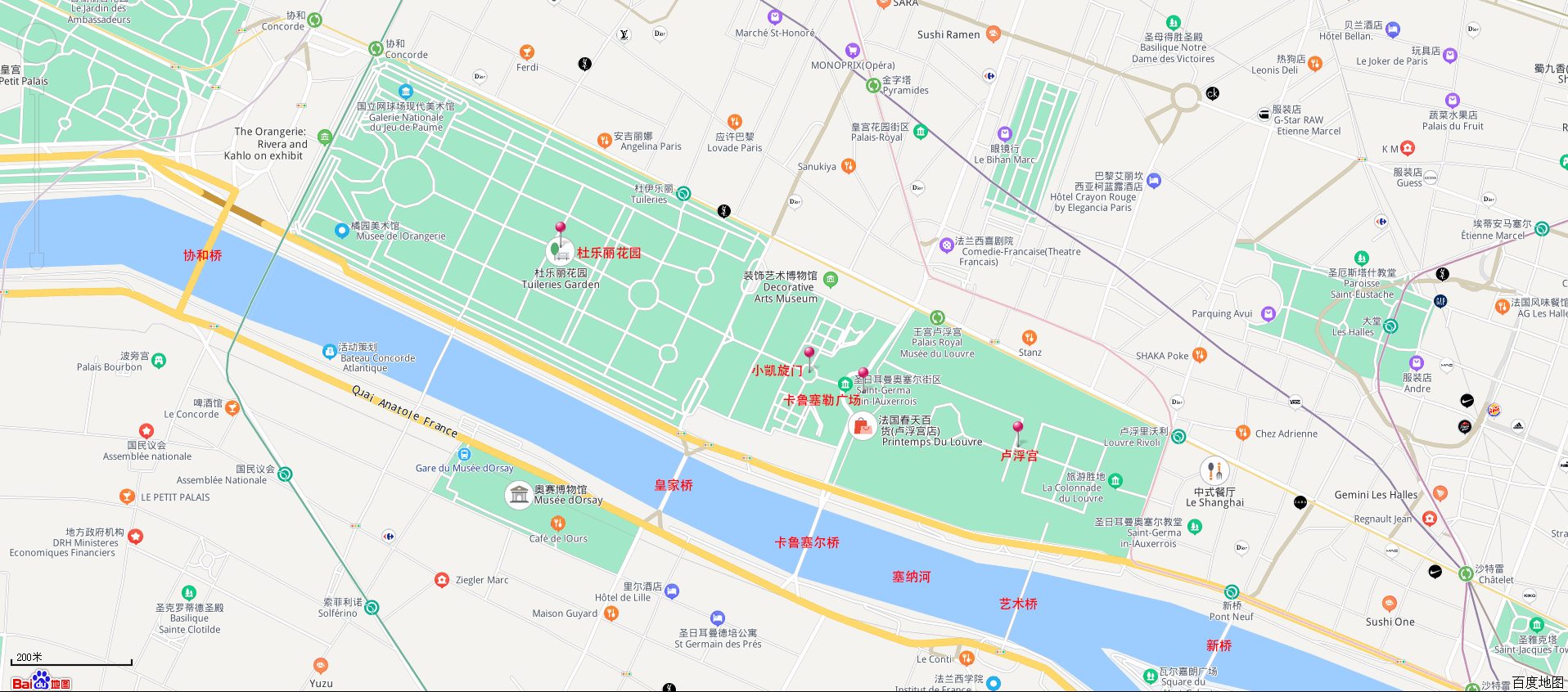
This is the Arc de Triomphe du Carrousel in the square, also known as the Little Arc de Triomphe du Carrousel.

Between 1806 and 1808, to celebrate Napoleon's series of war victories in 1805, the small Arc de Triomphe was built as the entrance to Tuileries Park. The small Arc de Triomphe is 19 meters high, 23 meters wide and 7 meters thick. Between the red and white marble columns are three round arches with luxurious decoration. The central arch is 6 meters high, and the smaller arches on both sides are 4 meters high.
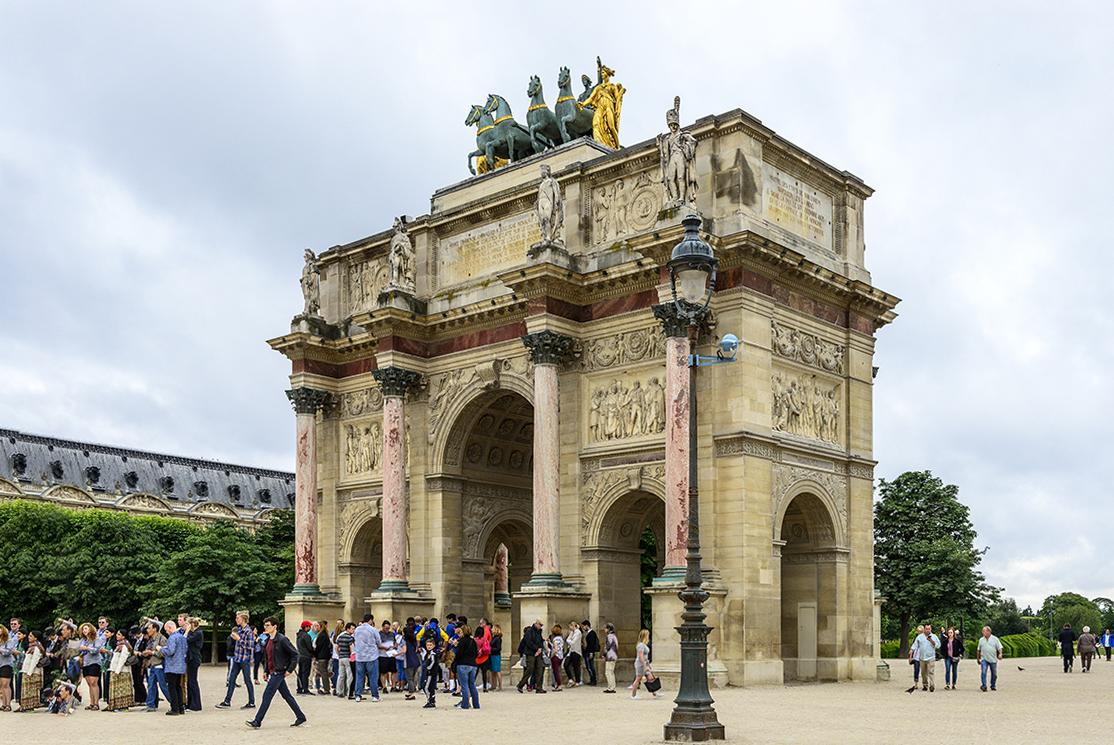
The marble reliefs on the arch represent Napoleon's diplomatic and military victories, depicting scenes such as the Peace of Pressburg, Napoleon Entering Munich, Napoleon Entering Vienna, the Battle of Austerlitz, The Treaty of Tilsit and the Surrender of Ulm.
At the top of the central arch is a group of distinctive sculptures.
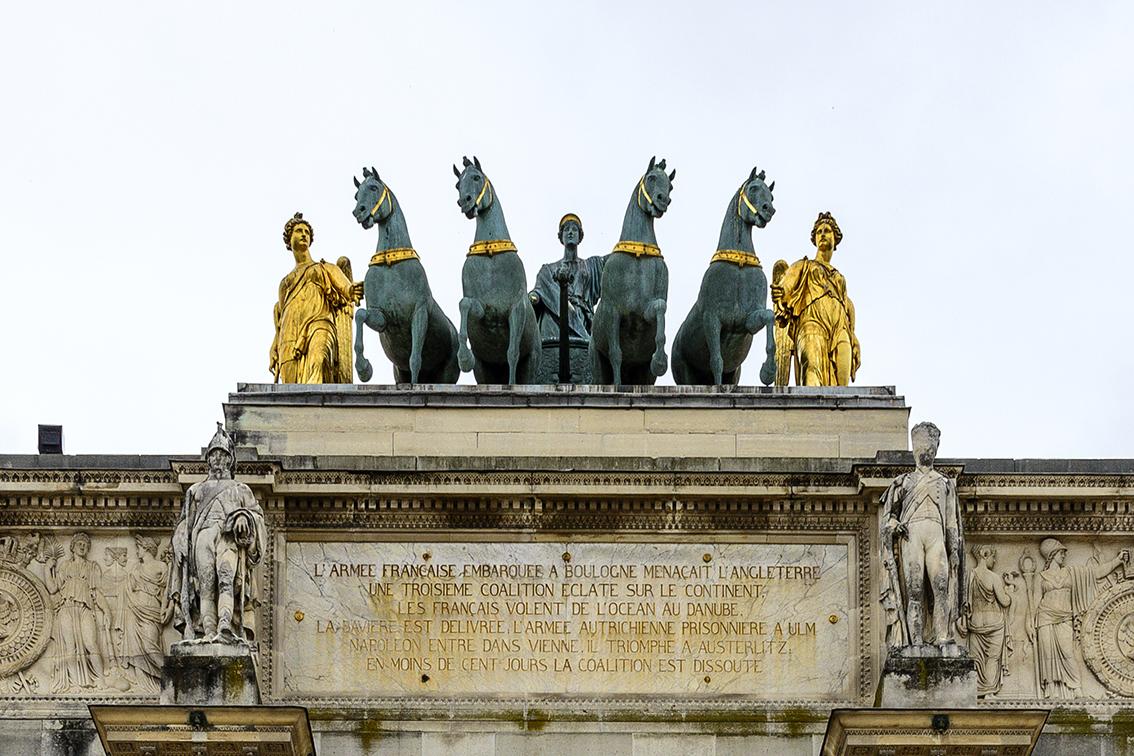
Four war horses wearing golden harnesses galloped along the chariot. Napoleon stood heroically on the chariot wearing a golden crown and holding a golden olive branch. Peace Muse and Victory Muse stood on either side of the war horse. When the gate was built, the four war horses were Napoleon's conquest in Italy and looted from St. Mark's Cathedral in Venice. In 1815, Napoleon returned it to Italy after his defeat and abdication, and what we see now is a replica.
The Ferris wheel on Place de la Concorde can be seen from the middle of the arches of the small Arc de Triomphe. Through the central arch, is the Tuileries Garden.
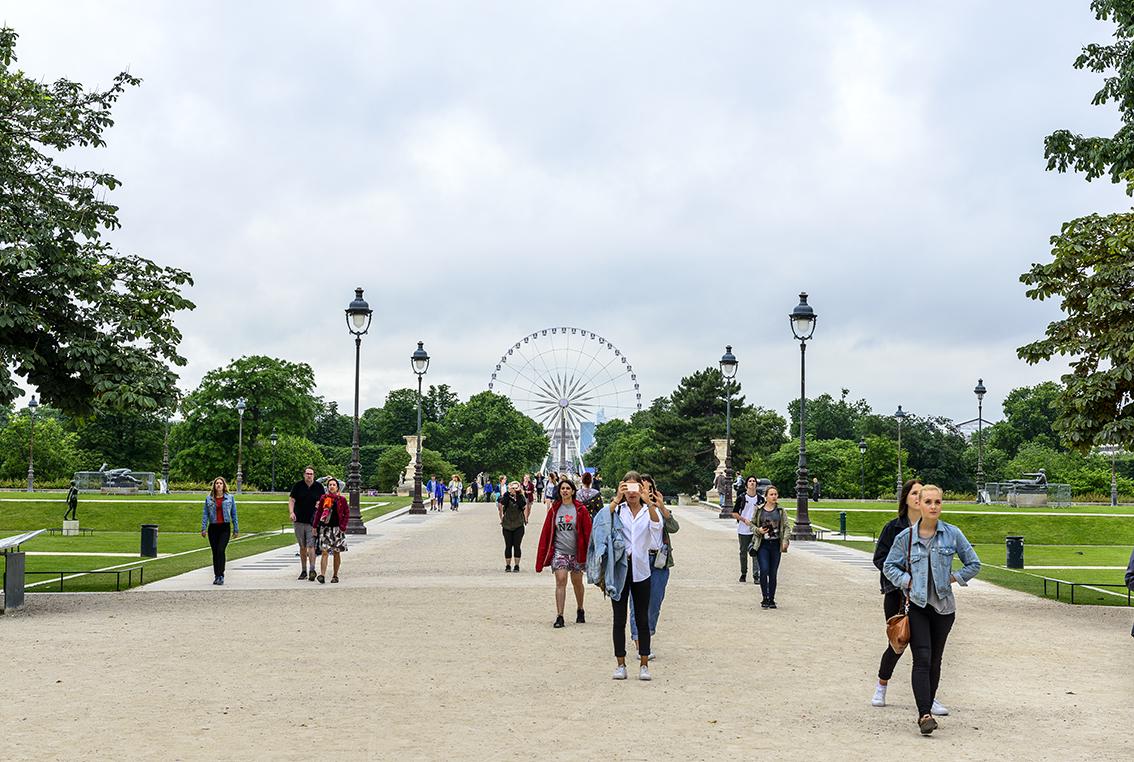
The day before yesterday I was sitting on the side of the Place de la Concorde in the Tuileries Gardens, and today I'm on the side of the Louvre. I just don't have time to walk around.
Paris has an urban central axis that originated in 1640 and was planned by Le Nortel, the designer of the gardens of Versailles that year. The axis starts at the Louvre, then the Tuileries, Place de la Concorde, the Champs Elysees, the Arc de Triomphe, and ends at the new La Grande Arche in the heart of Paris' la Defense financial and business district.

Opposite the Arc de Triomphe is the Louvre.
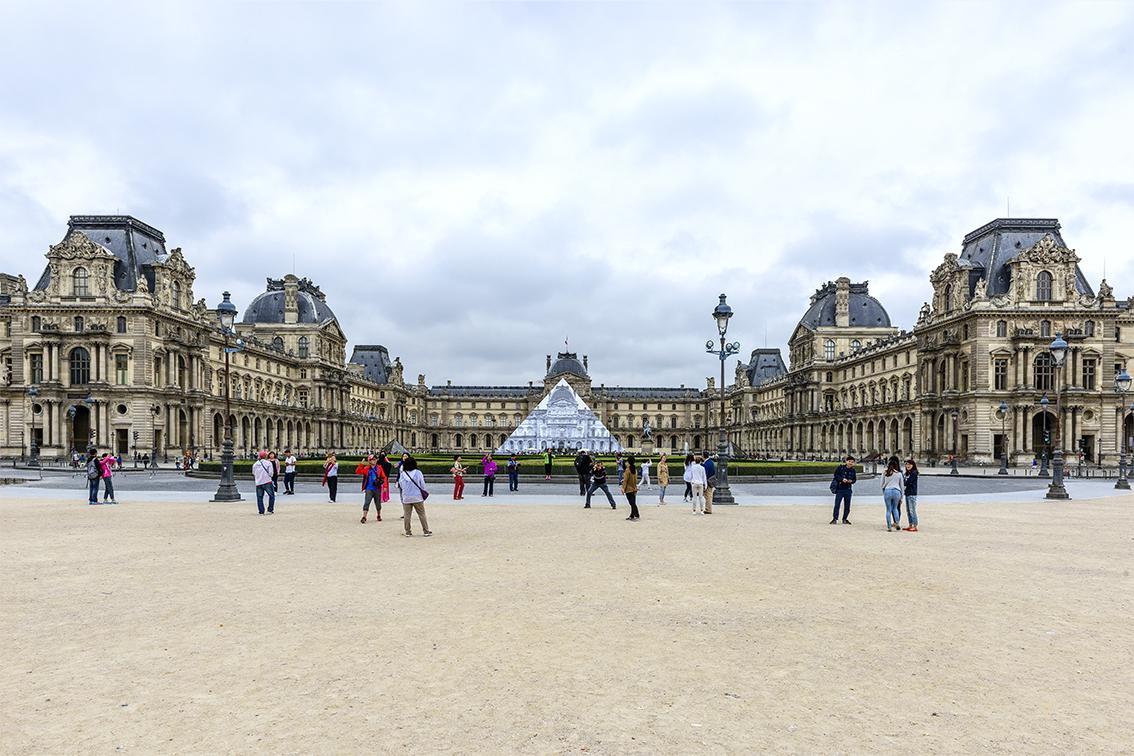
The building of the Louvre is U-shaped, with Richelieu on the left, Denon on the right, and Sully in the middle.
This is the Napoleon Court with the glass pyramid in the middle.
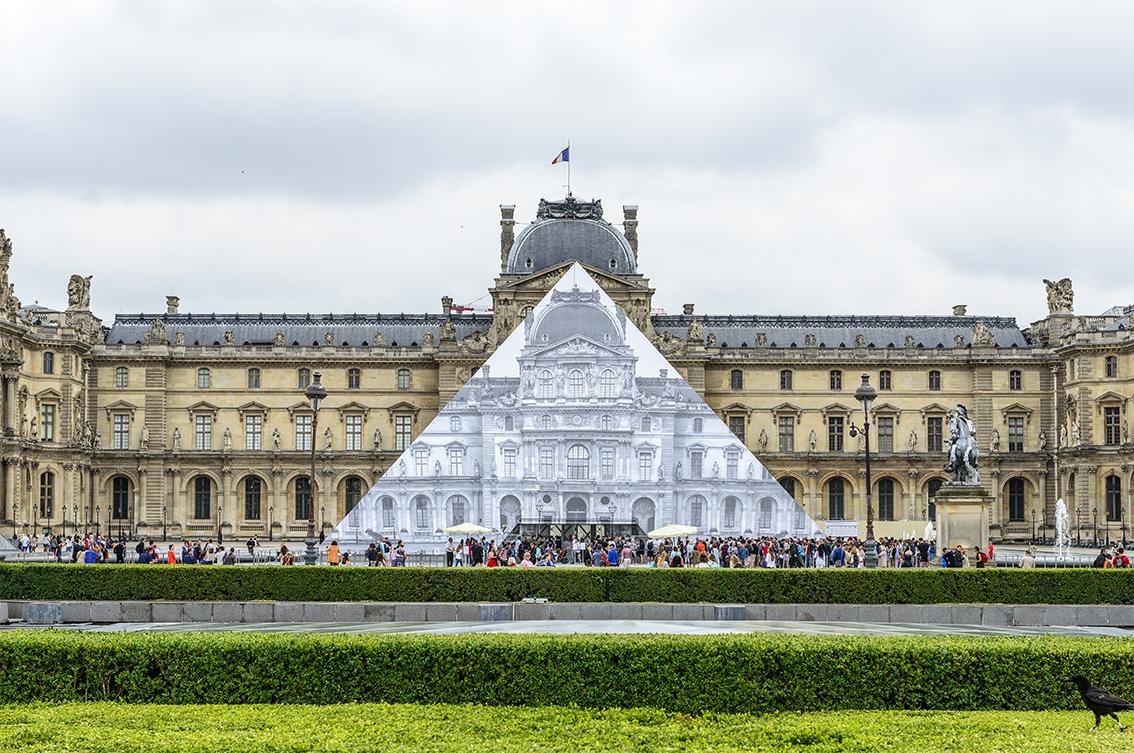
For some reason, the pyramid is not visible today, it is covered by a photo of the Louvre. Maybe the French still think that the pyramids destroy the ancient architectural style of the Louvre.
This is a glass pyramid I photographed in 2012.

The glass pyramid is the entrance of the museum. The tower is 21 meters high and 34 meters wide at the bottom. The four sides are composed of 603 diamond-shaped glass pieces, with a total plane area of about 1,000 square meters. The total weight of the tower body is 200 tons, of which the net weight of glass is 105 tons, and the metal support is only 95 tons.
In the early 1980s, French President Mitterrand decided to renovate and expand the Louvre. To this end, the French government extensively solicited design proposals. In the end, President Mitterrand came forward and invited 15 reputable museum directors from around the world to choose the design proposal for the project. As a result, 13 curators chose the design proposal of the Chinese-American architect I.M. Pei. Once the matter was announced, it caused an uproar in France. It was believed that this would destroy the 800-year-old ancient architectural style, "destroying both the Louvre and the Pyramid". On January 23, 1984, when I.M. Pei submitted the pyramid proposal to the Supreme Council of Historic Monuments as a "diamond," the answer was: "This huge piece of junk is just a fake diamond." But President Mitterrand defied public opinion and adopted I.M. Pei's design.
Visiting these world-famous museums is both exciting and frustrating. These museums are so big that if you look closely, you can't finish them in months or even years. I visited the Louvre in 2012, and entering the Louvre was like entering an art labyrinth. There was really not enough eyes, so I could only follow the flow of people.
Today, we have a full-time tour guide to accompany us. The admission time is 10:00, and the visit time is 1 and a half hours. It is said that tour guides in the Louvre have to go through strict professional examinations to obtain a tour guide certificate. It is good to have a professional tour guide, I believe he will introduce us to the most exciting exhibits.
Walk into the central hall of the Louvre.
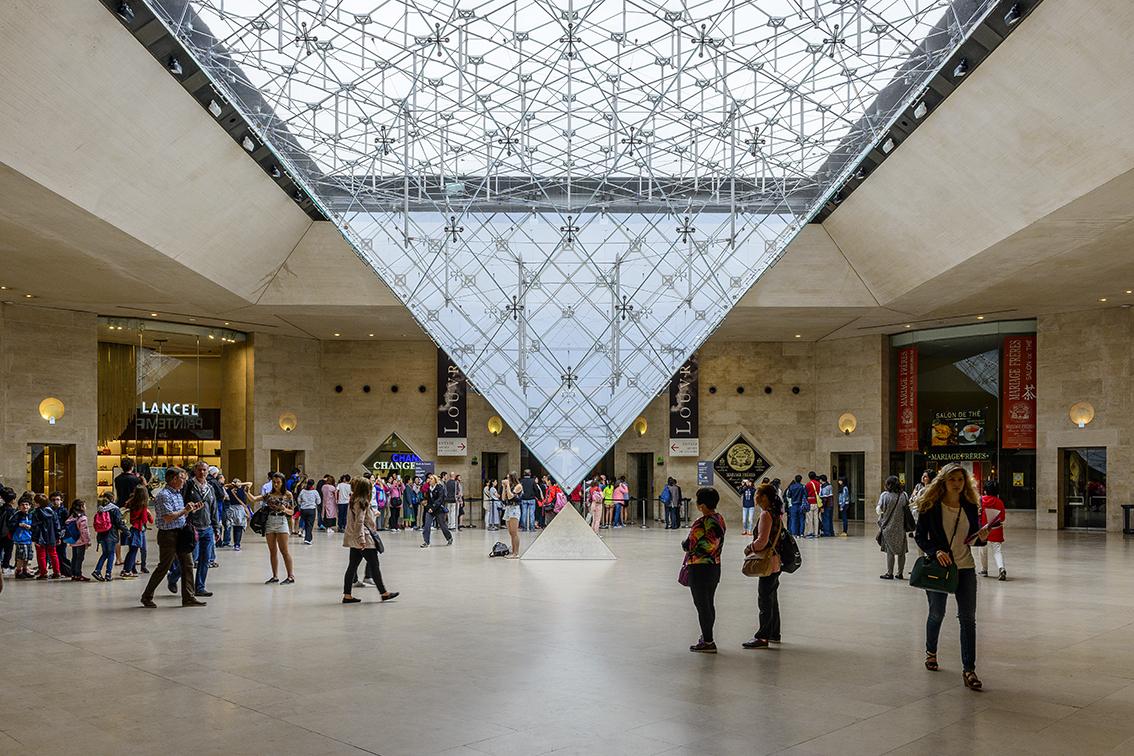
The tour guide was already waiting in the hall. It was a young man with a rather artistic temperament, surnamed Yang. Maybe he stayed as a tour guide at the Louvre after coming to Paris to study art.
Enter the first showroom.
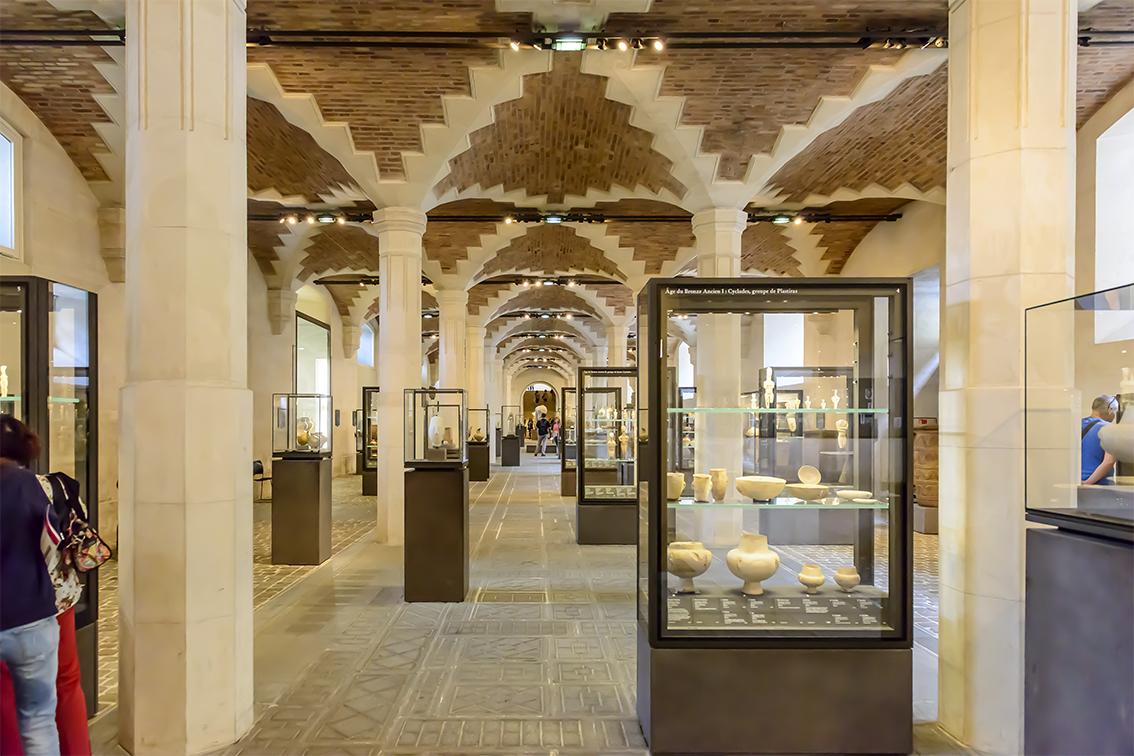
The first exhibit I saw: the sculpture "Corès," unearthed in the temple of Hera on the Greek island of Samos, circa 570-560 BC. Use Google Translate to detect that Corsican means "heart".
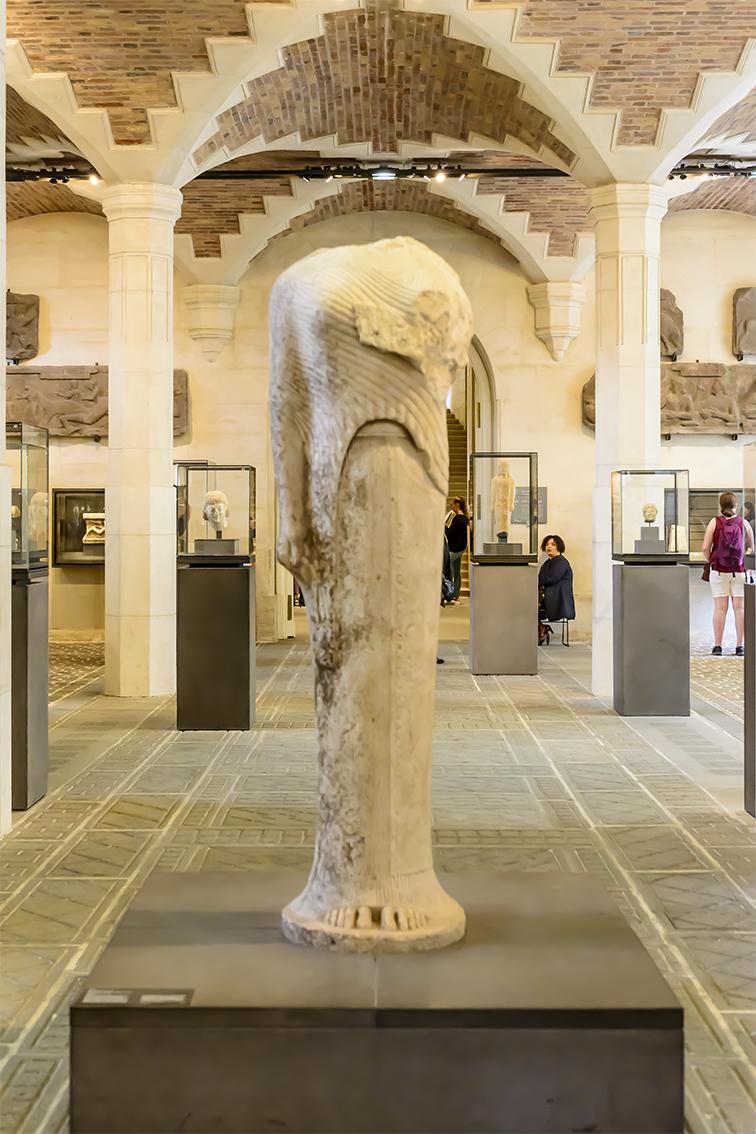
Sculpture Corë, unearthed in the temple of Hera on the Greek island of Samos, circa 570-560 BC.
Sculpture "Male Torso". Work unearthed in Miletus, one of the 12 city-states of Ionia in ancient Greece, circa 480-470 BC.
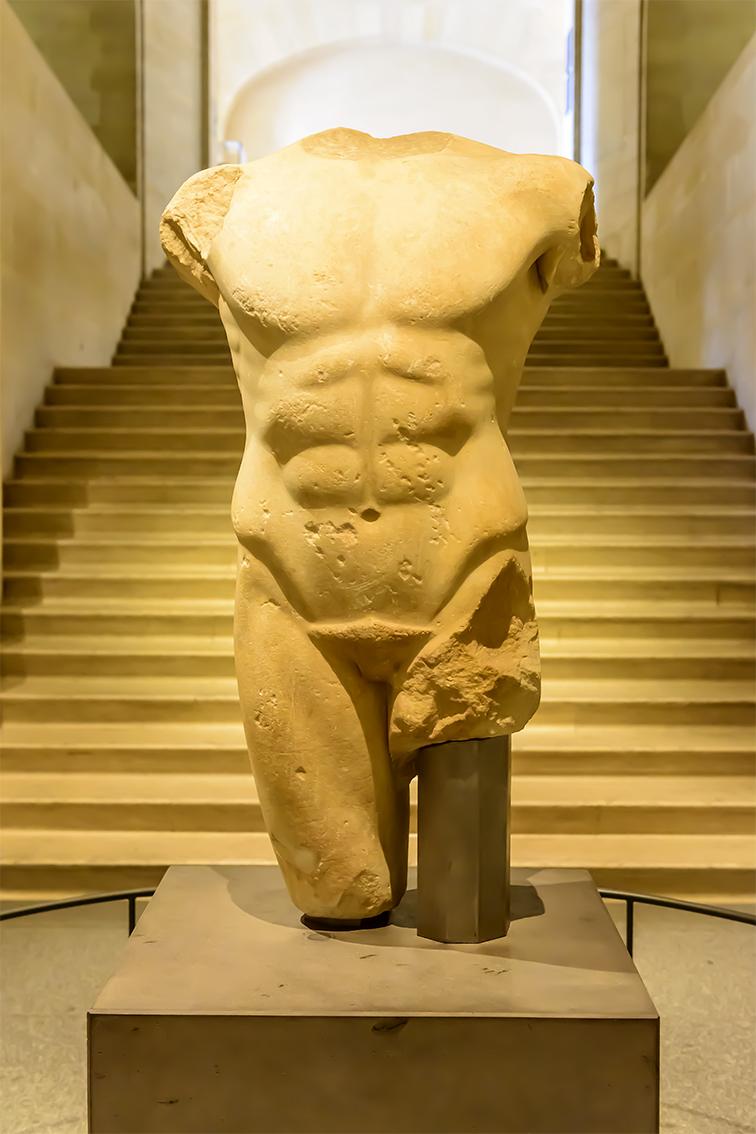
Sculpture "Male Torso". Work unearthed in Miletus, one of the 12 city-states of Ionia in ancient Greece, circa 480-470 BC.
It seems that Xiao Yang just took us through this exhibition hall.
Next showroom.
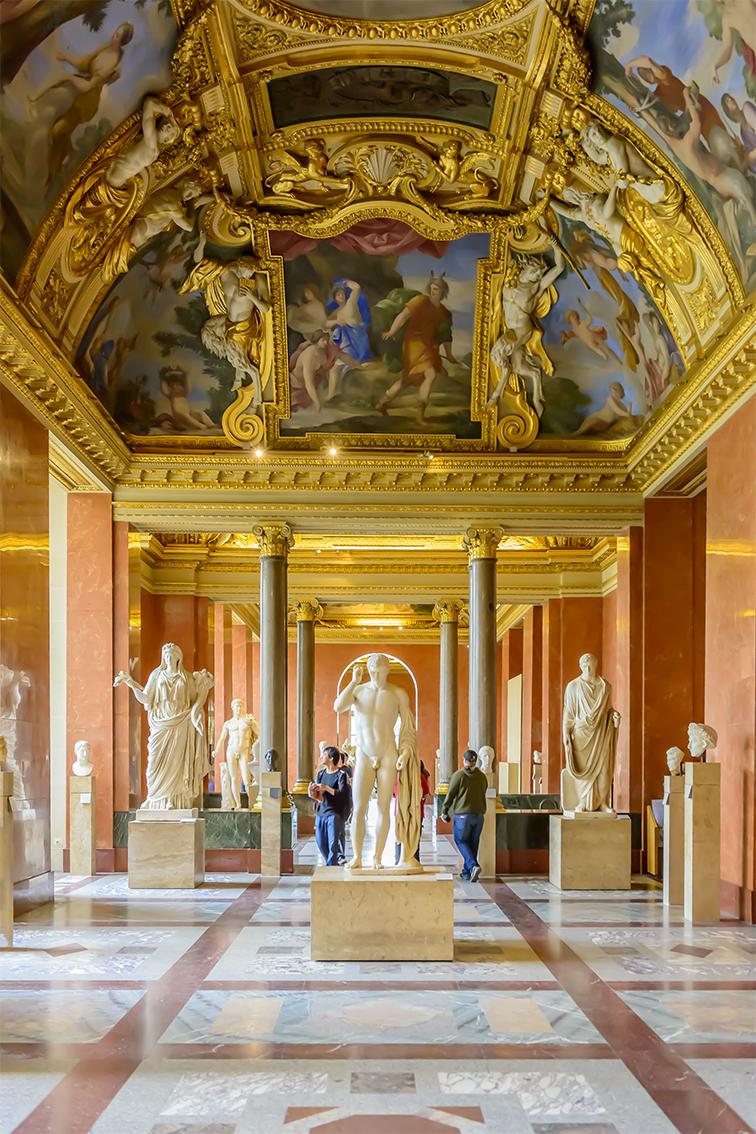
Sculpture Marcellus, circa 20 AD, Greek marble.
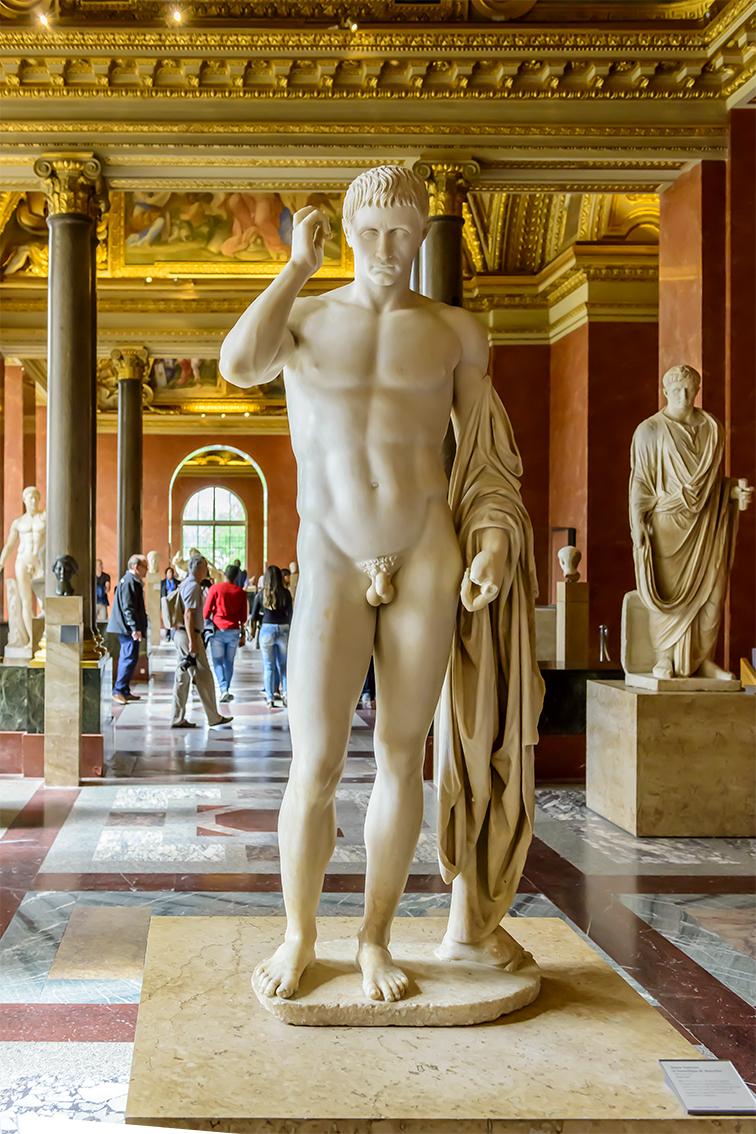
Sculpture Marcellus, circa 20 AD, Greek marble.
Marcus Claudius Marcellus (circa 268-208 BC) was an ancient Roman general who commanded the ancient battle of Syracuse (now Siracusa, Sicily, Italy).
It seems that we are still passing by. Where does Xiao Yang want to take us? To the exhibition hall where the sculpture "Venus de Milo" is located, which is located on the first floor of the Denon Pavilion. Hall 16 in the ancient Etruscan and ancient Roman exhibition area.
Xiao Yang has good intentions. If you look at this treasure of the Louvre's town hall earlier, you can avoid the flow of people. I can also shoot from all angles more calmly.

Sculpture "Venus of Milo"
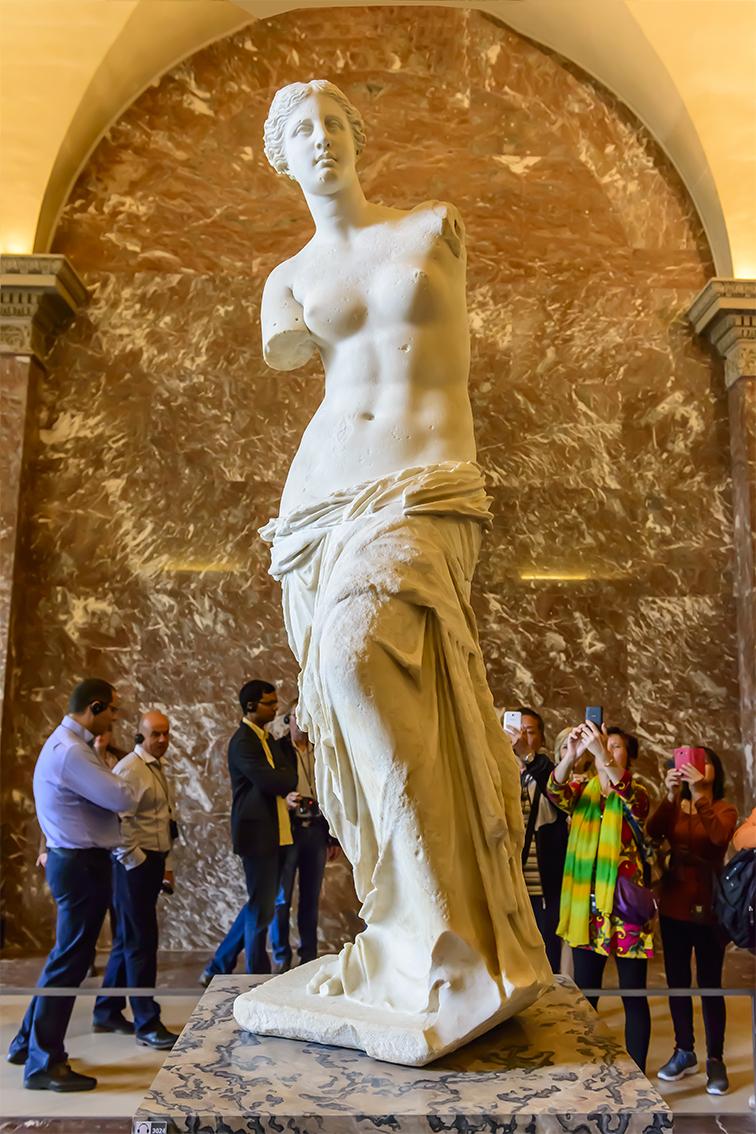
Sculpture "Venus of Milo"
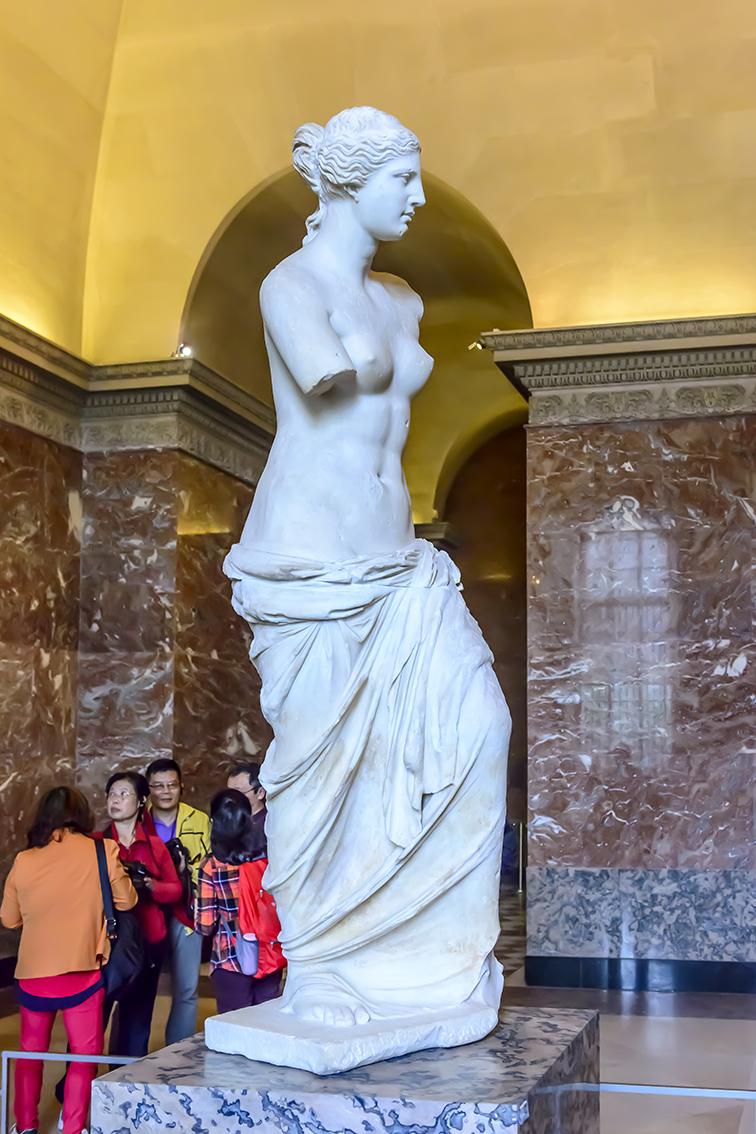
Sculpture "Venus of Milo"

Sculpture "Venus of Milo"
The statue of "Venus of Milo" Muse, about 2.04 meters high, is carved by two translucent dolomites. It was created at the end of the 2nd century BC or the 1st century BC, and the author has no way of verifying it. She stood on the marble base with white blood stripes, her upper body was bare, and her lower body was wrapped in a blanket. Her expression was dignified, her body was plump, she was slender, and she had a graceful appearance. The shape was extremely elegant, and it was a beautiful achievement. From the first day the statue was discovered, it was recognized as the most beautiful statue of a Greek woman so far.
In 1820, a French naval officer named Olivier Voutier came to the Greek island of Milo. By chance, he met a Greek farmer, Yergos, and under his leadership, he found a beautiful statue with broken arms in a cave on the island. This is the statue that later generations called "Venus of Milo". Wurtier and Yergos searched for a long time, but they never found the arms of the statue of Venus. Wurtier paid Yergos a deposit of 100 silver coins and left. After Wutier's warship arrived in Istanbul, he immediately went to meet the French ambassador to Turkey, the Marquis of Livier. After asking the reason, the Marquis sent the cultural counselor of the embassy to go through the transaction procedures with Wutier.
Not wanting to be in the meantime, the British official also heard about it and sent the destroyer "Holland" to Milo Island. When France and Britain arrived at Milo Island almost at the same time, the statue had already been bought by the Greek temple manager, intended to give it away, and had been packed and loaded onto a Turkish warship. After some competition, the French finally bought it for 8,000 silver coins, and since then there has been an eternal peerless beauty in the Louvre that the world has fallen for.
The dome of the next showroom.
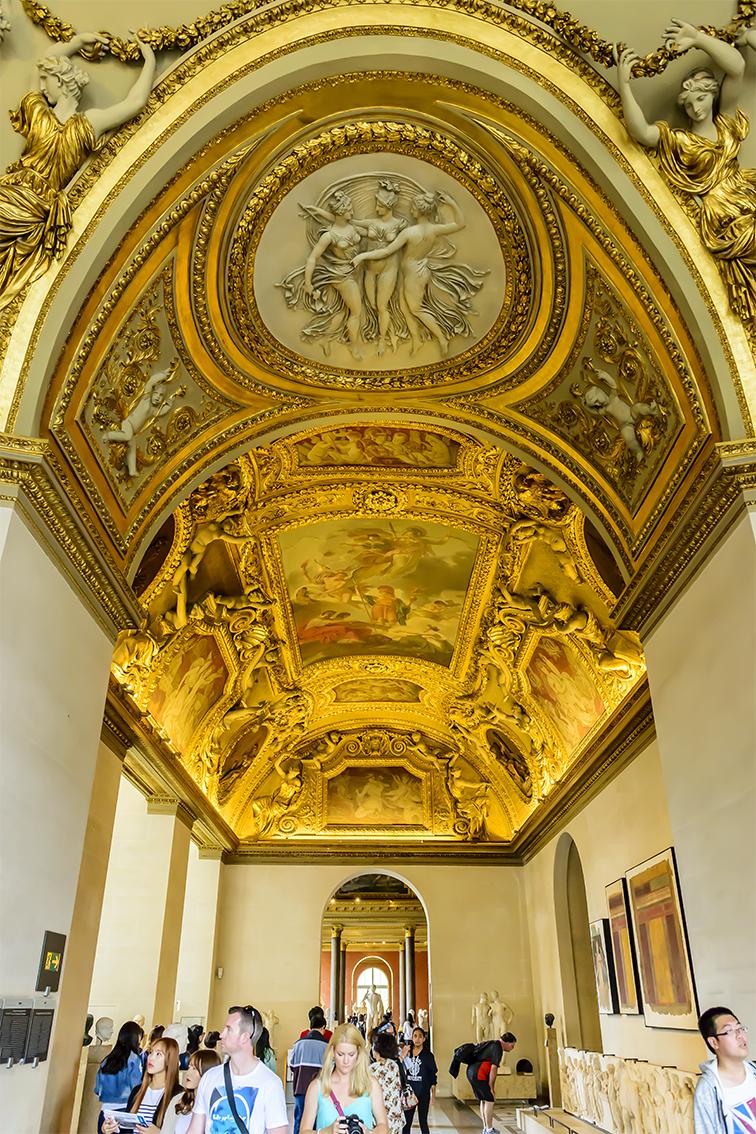
The Louvre itself is a magnificent art treasure.
Xiao Yang took us again to one of the town pavilions treasures of the Louvre, in front of the sculpture "Winged Victory of Samothrace". It is on the Daru stairs in the Apollo corridor of the Denon Pavilion on the second floor.
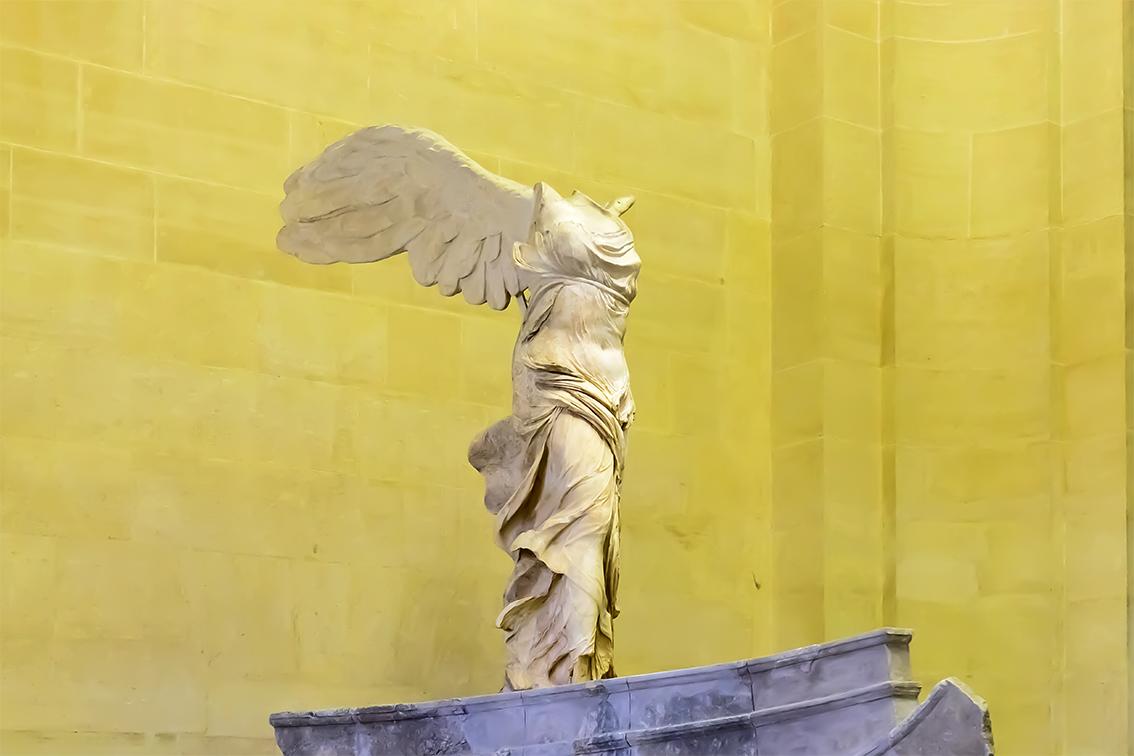
Sculpture "Victory of Samtras Muse"
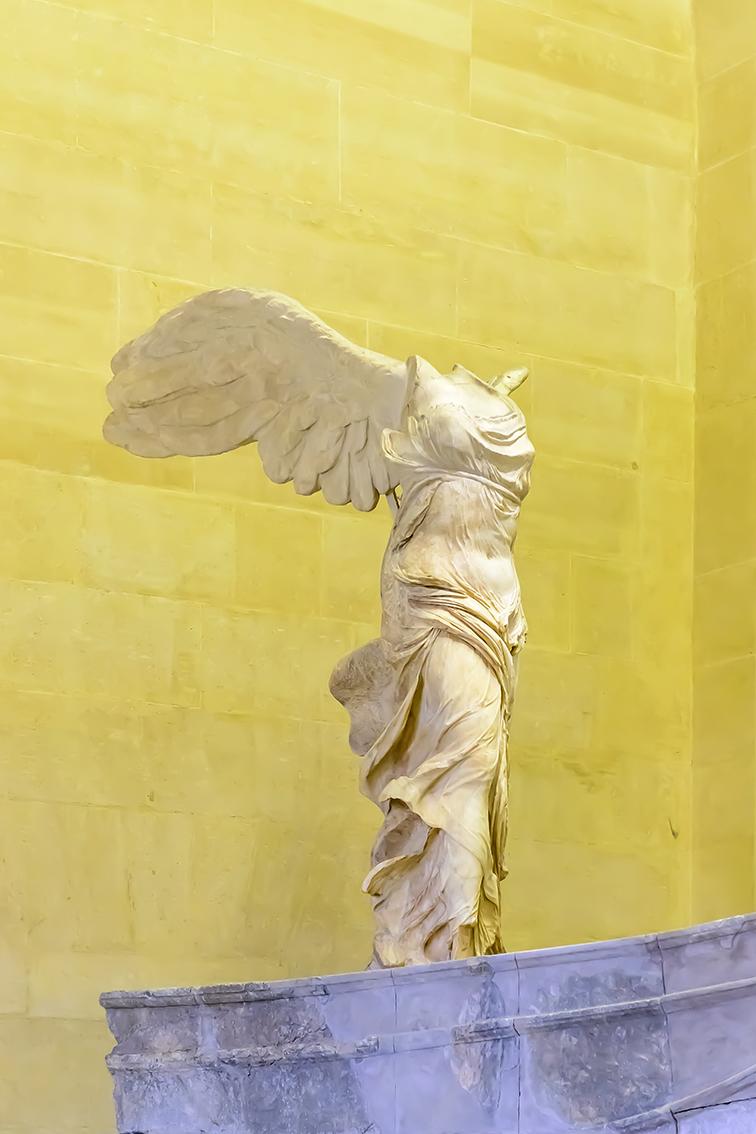
Sculpture "Victory of Samtras Muse"
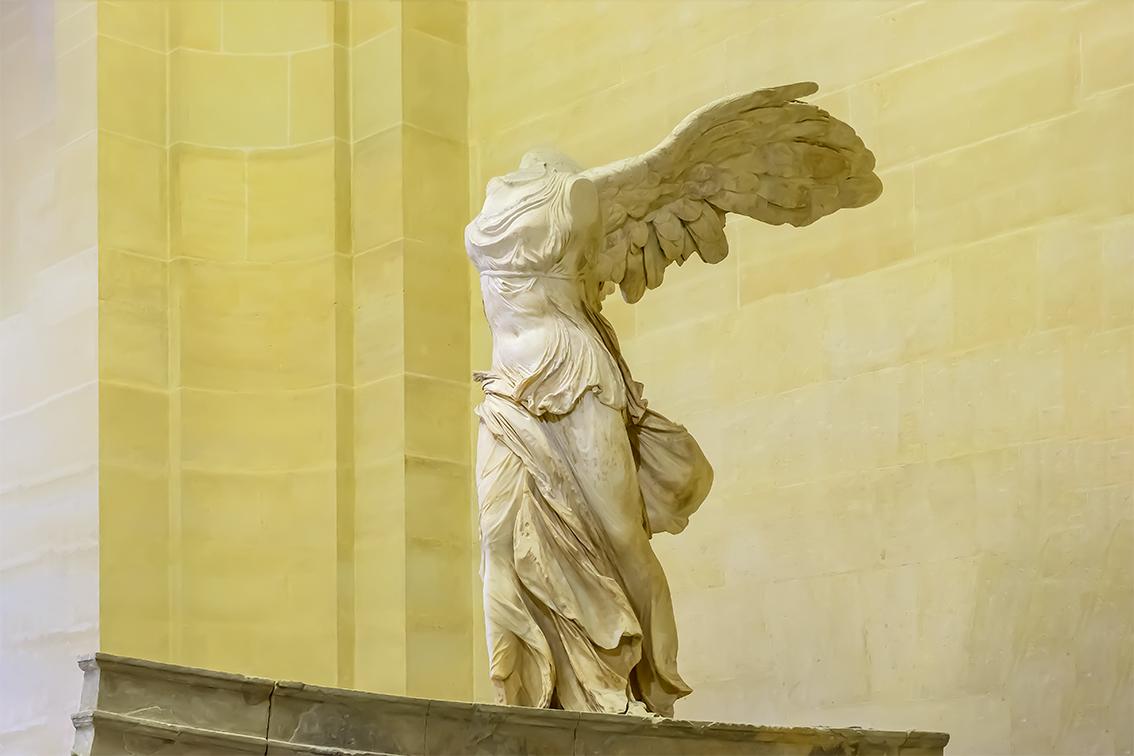
Sculpture "Victory of Samtras Muse"
Created in the 3rd century BC, this 3.28-meter-high sculpture is a famous sculpture from the Hellenistic period in the history of ancient Greek art (the end of the 4th century BC to the 1st century AD, also known as the "Panhellenic period"). During this period, King Alexander of Macedonia conquered Greek city-states, established the Alexander Empire, and expanded outward. The sculpture was built to commemorate the naval battle that defeated Ptolemy's fleet.
Excavated from the ruins of the temple on the island of Sumteras in 1863. Although the statue of Victory Muse has been mutilated, the heroic and elegant momentum of Muse can still be sensed from the well-preserved torso. The two open wings and the light flying dress make people feel that Muse is taking off in the air, with a strong sense of movement. The plump body reveals strength and health under the thin shirt, expressing victory and the joy that comes with it. It is the most perfect work of enthusiasm and movement among known statues. The head and arms of the statue have been lost in history, but the elegant skirt and the flying form are still dynamic and lifelike.
The next exhibition hall is the Apollo Promenade in the Denon Pavilion on the second floor.
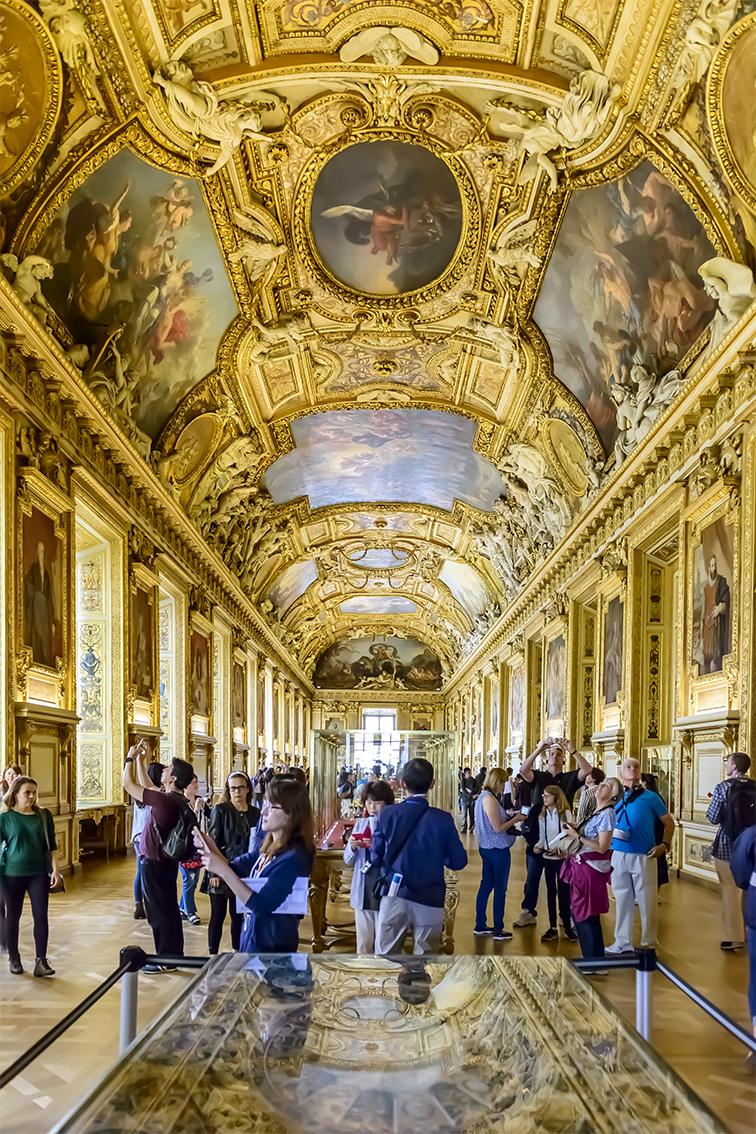
The Apollo Promenade is the most palatial place in the entire Louvre. The promenade was destroyed by fire in 1661 and was subsequently rebuilt by the architect Louis Le Vau. The ceiling was decorated by the painter Charles Le Brun with the theme of the movement of the sun, which was the symbol of King Louis XIV. The decoration was continuously refurbished until 1851, when the Romantic painter Eugène Delacroix painted a painting of the god Apollo defeating the python in the center of the vault. It was completed.
The decoration of the Apollo Promenade is resplendent and luxurious.
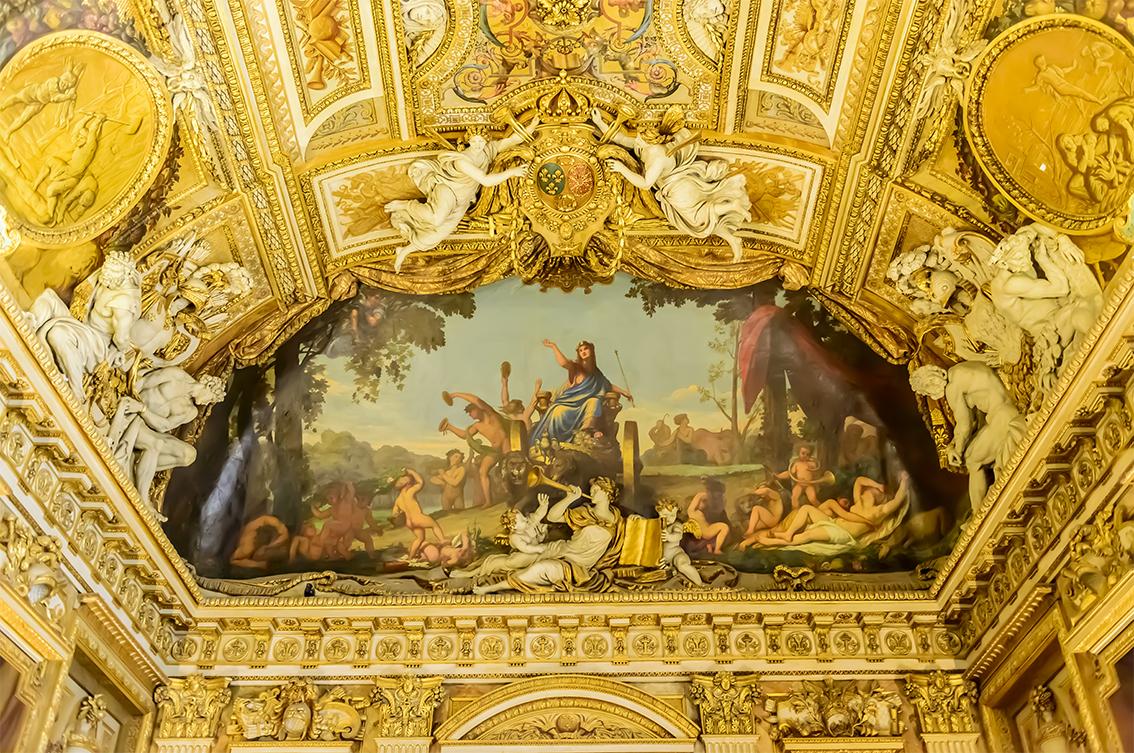

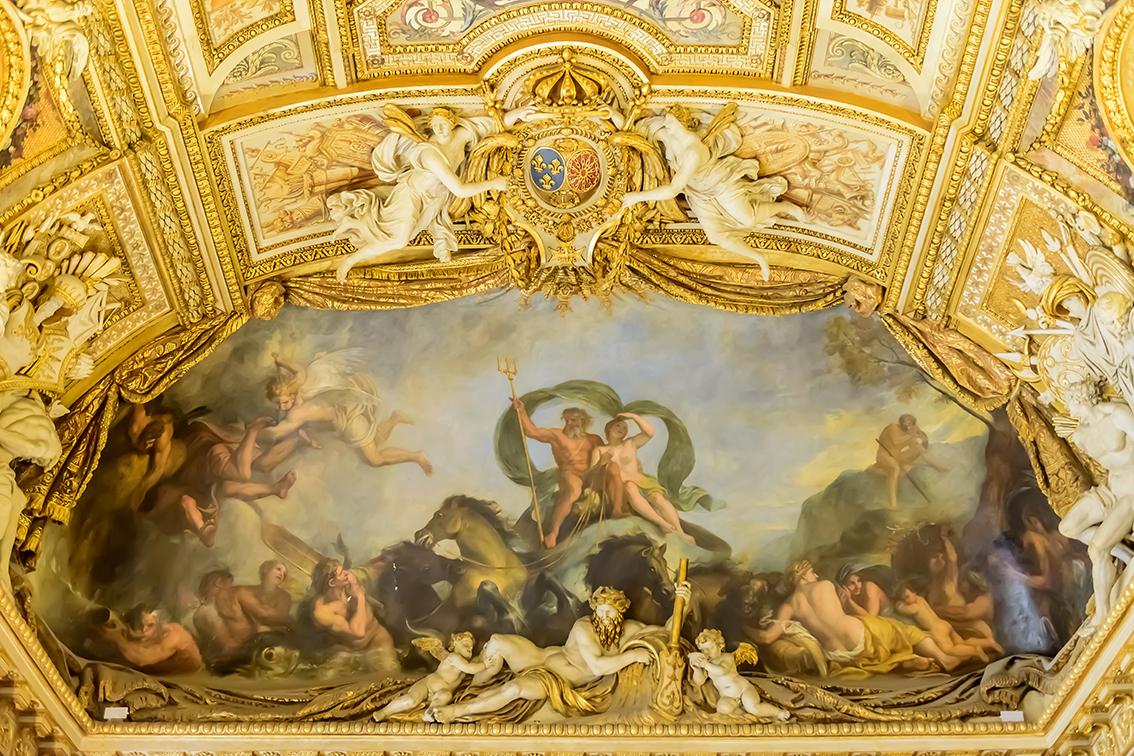
What is more interesting is that there are 12 constellation reliefs and badges on the dome of the Apollo Promenade.
The Apollo Promenade displays countless beautifully crafted treasures. Glass cases house the crowns and jewels of the French royal family.
The crown worn by King Louis XV of France when he was crowned in 1723.
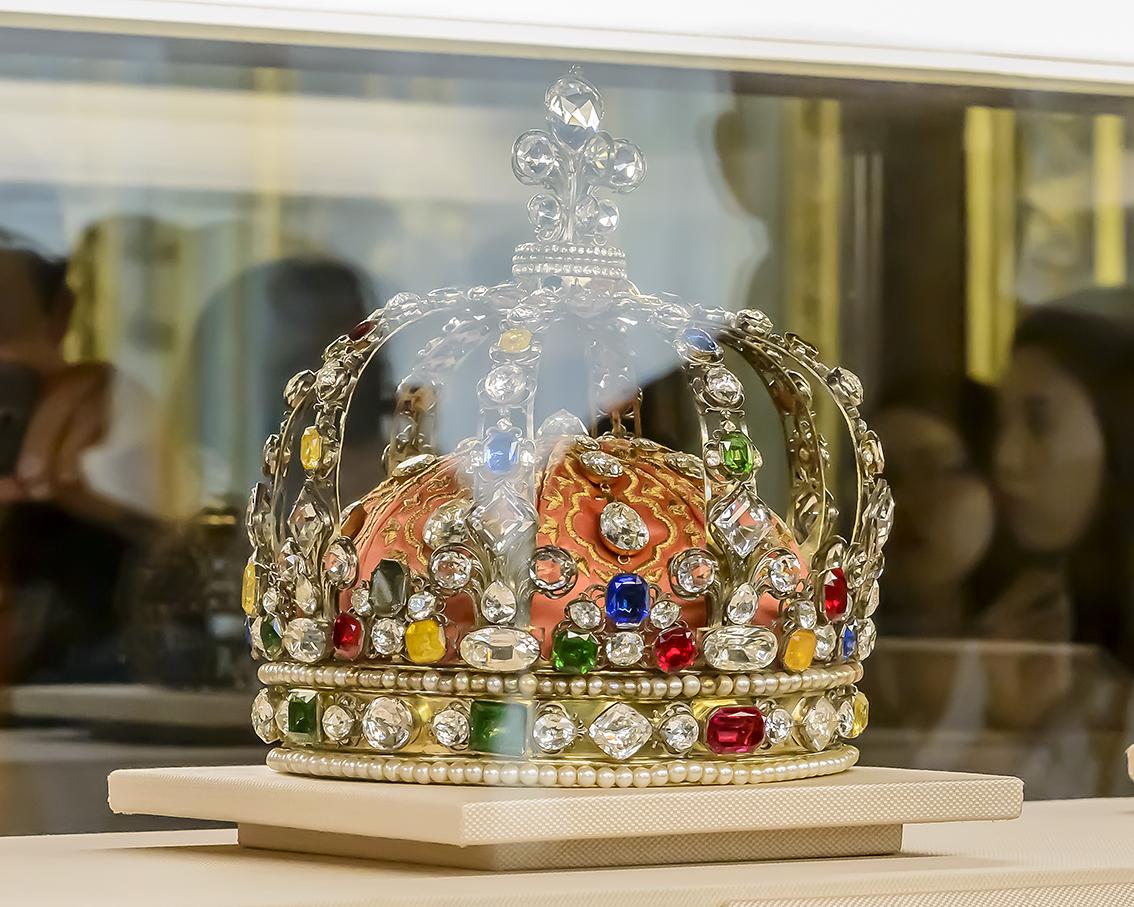
The crown worn by King Louis XV of France when he was crowned in 1723.
The crown is set with 282 diamonds, 237 pearls, 64 colored gemstones including sapphires, rubies, emeralds, citrines, including the famous "Regent" diamond. The crown has 4 arches, and the top of each arch is equipped with a platform decorated with two circles of diamonds. The platform is set with 9 large diamonds to form a bright three-dimensional iris flower. The inner lining of the crown is embroidered with gold thread, and the top is also decorated with diamonds.
What is a "Regent" diamond? There is a long story.
In 1701, at the Golconda Diamond Mine in India, a slave discovered a large diamond weighing 410 carats. In order to take the diamond out of the mine, he reluctantly cut his thigh, hid the diamond in his flesh, and then wrapped it in a strap to escape the mine. He confided a secret to an English captain and offered to share the diamond with the captain on the condition of helping him escape the country. The captain ostensibly complied with the slave's request, but during the journey, the captain stole the diamond and threw him into the vast sea. It is said that the captain sold the diamond to the merchant Jem Chinde for £1,000. Later, Thomas Pitt, the British governor of Madras, India, bought the diamond for £24,000 and named it the "Pitt" diamond.
The diamond was shipped back to London by the merchant ship "Bedford", where it was cut by Joseph Cooper, and the weight of the diamond was reduced from 410 carats to 400.5 carats. The cost of cutting was as high as 5,000 pounds, which was a considerable expense in the early 18th century. About two years later, the "Pete" diamond was cut again. The "Pete" diamond was cut, processed and polished into several diamonds, the largest of which weighed 140.5 carats. After the death of King Louis XIV of France, his 5-year-old great-grandson ascended the French throne, and Isaac Abendaina, Duke of Orleans, became regent. To show his power, Abendaina spent 135,000 pounds to buy the diamond and named it the "Regent" diamond.
During World War II, German troops captured France. Before the fall of Paris in 1940, the French government hid the "Regent" diamond in an unobtrusive parapet in the Château de Chambord-sur-Loire. German Marshal Goering threatened to hand over the diamond with force, but did not get it. In 1945, the "Regent" diamond returned to the Apollo Promenade of the Louvre.
There is also a jeweled crown in the same showcase.
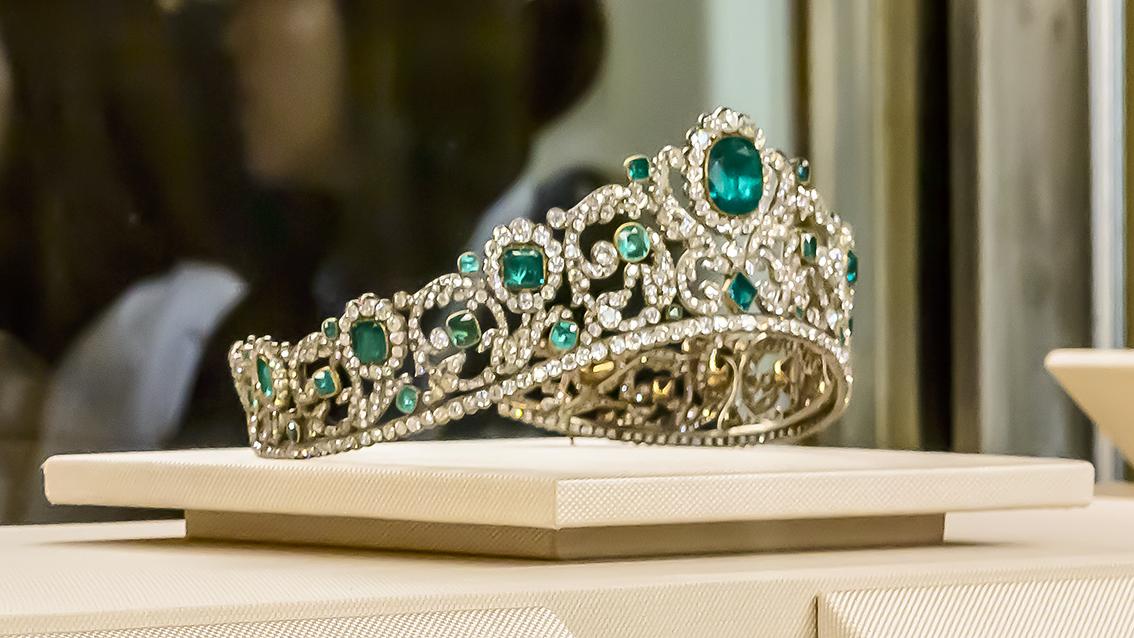
This crown was worn by Marie Theresa, wife of Louis XVI and eldest daughter of Queen Marie Antoinette, Duchess of Angourem
The crown was worn by Marie Theresa, the wife of Louis XVI and the eldest daughter of Queen Marie Antoinette, the Duchess of Angoureme. She was the only one of Marie Antoinette's children to survive until the end of the French Revolution, and her husband was a cousin Louis XIX. When the July Revolution broke out, his father, Charles X, abdicated the throne due to the need to sign the abdication agreement and the document of renunciation of the throne, which took twenty minutes to sign, so Louis XIX became the formal king of France in those twenty minutes.
The walls of the Apollo Promenade are framed with portraits of kings and artists of all ages. I took two casually.
This is the painter EUSTACHE LE SUEUR.
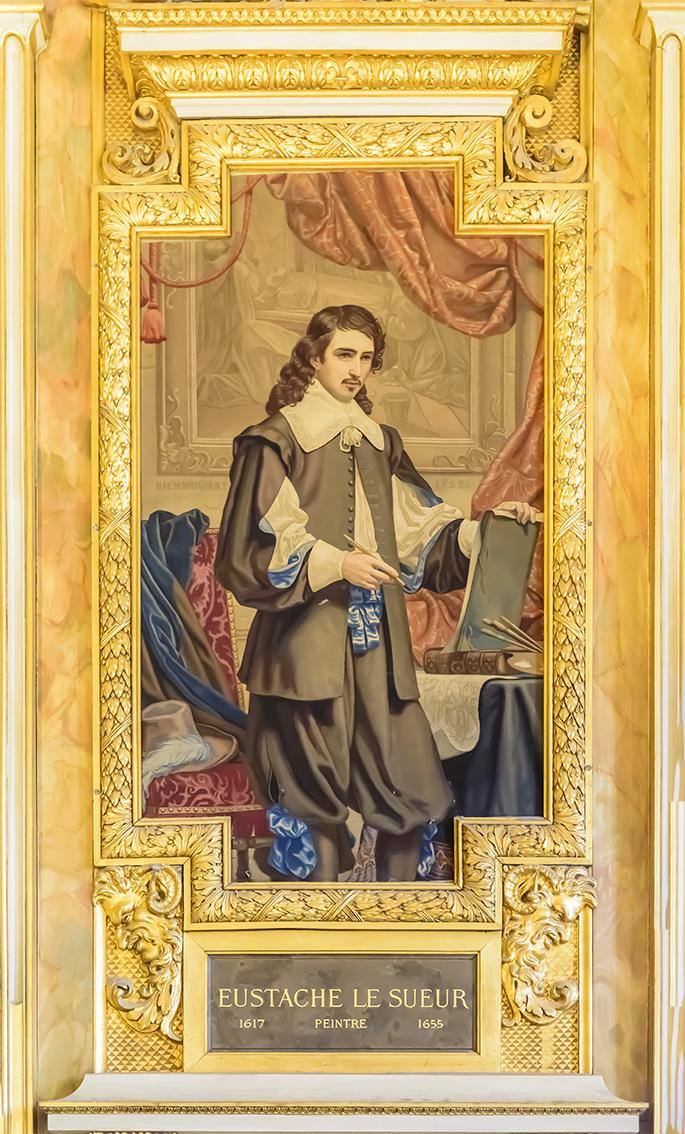
Erstas Le Sewell, one of the most important French painters of mythology and religious painting in the 17th century. He has always been considered the "Raphael of France" and has been compared with the likes of Nicolas Poussin and Charles Lebrun.
There is also a portrait.

I forgot the instructions for the painting, so I can't tell who he is. The character in the painting is imposing, holding a chisel in his left hand and a hammer in his right. He must be a sculptor.
To be honest, just one Apollo Promenade was enough for us to see for a day. But we only stayed for 10 minutes.
The space is a bit long, the next travel notes will continue to introduce the Louvre to friends!
